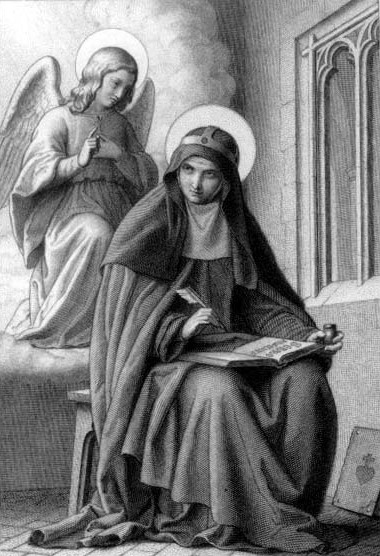I have talked before about my great love of the books by Viktor Frankl. Most people, I think, come to his work via Man’s Search for Meaning but I was introduced to him when a tutor lent me Psychotherapy and Existentialism back in my training days. I was hooked and soon bought some of his books.
He writes with an amazing eye to the human spirit as he survived the Concentration camps of National Socialist Germany. His first wife and mother were killed in those camps. There is no bitterness in his writing, despite the fact that he saw the very depths that human beings are willing to stoop to, sometimes with a false hope of survival.
He talks of the Capos. They were fellow Jews, prisoners like himself, but who were in the pay of the Nazi guards. They may certainly have lived longer than many of the prisoners, worked to death in those camps; but for what? There is no meaning in simply surviving.
That war killed millions and millions of people. No, not the war, PEOPLE did this. How does a country end up producing so many who will vote for such evil and even enact it? It is the mystery of iniquity big time. I think the civilian victims were around the 13 million mark; 6million Jews (polish, Austrian German, Dutch and more), 3 million Polish Catholics with the bulk of them being priests. The slaughter began with thousands and thousands of disabled and mentally ill people and in the number went Jehovah’s Witnesses (what on earth for?) and many homosexual people (mainly German’s I believe). There were Evangelical ministers who had stood up for freedom and countless children.
Sadly nothing much seems to have been learned. There is still the fear of those who are not understood that leads to rumour, lies and of course persecution. There is gross indifference to the suffering of others.
On the Day of Atonement (Yom Kippur) in 1891 a girl was born to a Jewish family living on that overlap land of Germany and Poland (Breslau/Wroclaw). She was named Edith and was the youngest of 11 children. Her father died when she was young and she and her six surviving siblings lived with their mother who loved God.
By her teens Edith had decided she was an atheist though she always respected her mother’s faith. She was a very intelligent young lady and became one of the first women to be admitted to the Universities in Germany. She studied philosophy and Phenomenology and worked with Heidegger for a time.
In 1921 Edith was on holiday and looking for something to read. She picked up a book that happened to be by a fellow Jewish woman who had become a Carmelite nun. It was the autobiography of St Teresa of Avila. (wonderful woman!) This was the beginning of a turnaround in Edith’s life.
She went on to learn as much as she could and was baptised the following year. She really longed to enter Carmel but this was put on hold for her mother’s sake.
In those days Germany was suffering from the after effects of their role in the First World War. In a bid for revenge Britain and France were demanding a huge debt be paid but this helped push the German economy into the ground. Revenge has a nasty habit of coming around and biting you on the posterior.
The people of Germany wanted a better life, a better economy and as is so common in these situations they would vote for whoever promised it.
Meanwhile Edith had become a popular and well known figure in the Catholic Women’s Movement. She had also I believe met a well known writer and man of integrity Dietrich von Hildebrand.
Well before the election Hitler was making it clear what his plans were and his hatred of the Jews. There was no love for the Catholic Church either especially as one Pacelli had encouraged Catholics not to vote National Socialist. Maps of the votes of the time (1933) show that Bavaria barely voted for the NSP at all and all other high Catholic areas had very few votes for them too.
As soon as Hitler came to power it became more and more obvious what he was going to do to the Jews and any well known Catholics. Dietrich von Hilderbrand got out of the country only just in time. People told him later that his flat was barely empty when the police went in to arrest him.
Meanwhile Edith had gone to see the Pope and asked him to speak out against the anti-Semitic views of the Nazi Government.
In Austria Dr Frankl continued to work with his patients but the news that Germany was going to annex Austria was a bleak. As it happened he did get a visa to go to America, but he could not bring himself to leave his parents and patients and so he stayed.
Edith finally entered Carmel and took her vows. She took the name of her beloved St Teresa of Avila and became Sister Teresa Benedicta. Her sister Rosa also became Catholic and a third order Carmelite.
In 1936 Hitler’s Government made homeschooling illegal. All children must attend school to receive the Third Reich propaganda. All children must join Hitler’s Youth. It was all compulsory. Pacelli now Pope Pius XII tried to protect Catholic education at least with the Reich-Konkordat tried to protect both freedom of education and freedom of publication. It was to be (the pope hoped) a way to maintain a semblance of free speech in an otherwise carefully controlled Germany. I don’t get the impression it really worked.
Edith’s request for a voice against the Nazi’s had apparently gone unheard but on Passion Sunday of 1937 a most unusual Encyclical was published and sent out. It spoke clearly against the Nazi’s but that wasn’t the most unusual thing about it; It was not written in Latin as all encyclicals were. It was written in German and called MIT BRENNENDER SORGE (With Burning Sorrow)
In Bavaria a teenage boy called Joseph Ratzinger, son of a local policeman joined Hitler’s Youth as he was obliged to. He was blessed though to have a good Youth leader who, although believing in Nazism as a good way for things to be, agreed to sign his papers and not insist on attendance. So the young Joseph did not attend.
The war was on Hitler invaded Poland in 1936 and hell broke loose.
In that darkness Viktor Frankl and his wife and mother were taken to concentration camps to be worked to death. Only Viktor came out alive.
The von Hilderbrands had escaped and out of Asutria their relatives the von Trapps (Sound of Music fame) had also made it to Switzerland.
Sr Teresa Benedicta and her sister Rosa were sent to Holland in the hope that there they would be safe. They weren’t. And when the Catholic bishops spoke out strongly against the way the Jews were being treated revenge was soon taken. The Carmelites hoped to get the two Jewish women to Switzerland but it wasn’t to be.
Along with Corrie Ten Boon and her sister and the Jewish families they had been hiding, Sr Teresa Benedicta and Rosa Stein were bundled into trucks filled with Jews and Christians who had helped them and taken away.
Corrie Ten Boon was to see her sister die, though she finally survived and even forgave her guards, one of whom she later met.
On August 14th 1941 there was the death of a young priest Fr Maximillion Kolbe who had been starved to death in the camps in place of a fellow Pole who had begged for his life because he had a family. The man survived and he and other camp survivors spoke of the priest who had said he would die instead. Fr Kolbe, now St Maximillion Kolbe was one of thousands of priests who were killed in the camps.
Meanwhile in Poland a young actor was seeing the horror of war from both sides, as National Socialism attacked from one side and Communist Socialism from the other. He was finally ordained Fr Karol Wojtyla in 1948. Out of the horror of war, the insistance of those in power of stamping on the weak and deciding who should learn what, beleive what and even be what had formed a strong resistance to hatred in two men at least.
Both of those men who have so valued the freedom of others and have written and spoken of it in love and charity became popes; Venerable Pope John Paul the Great and Pope Benedict XVI who took the name of the Pope of peace Benedict the XV. Perhaps if Britain’s Government in 1916 had not been so arrogant and had listened to Pope Benedict XV the First World War would have ended so much sooner; Lenin may never have been able to move from Germany to Russia and those lights that lit up the skies in 1936 just as Our Lady of Fatima warned, would never have been seen as World War II would never have happened. Pride is a terrible, terrible thing.
It was on this day August 9th 1942 that Sr Teresa and her sister Rosa were gassed to death, thanks to the opinion that Jews are not really fully human. Sr Teresa Benectica left behind some of the most powerful and beautiful writing on the soul of women. Read more about her HERE. This wonderful saint whose spiritual mother was a fellow Hebrew Catholic St Teresa of Avila who was such an inspiration for Charlotte Mason- has much still to teach us, especially women, about our true worth.
These stories should not be forgotten. Today is the Feast of St Teresa Benedicta. Her love of learning, freedom and Philosophy has influenced many fine writers since. Let’s not forget.
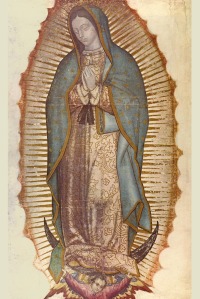 Dec 12th is the Feast day of Our Lady of Guadalupe. (Dec 9th would have been the feast of St Juan Diego but it fell on 2nd Advent Sun this year)
Dec 12th is the Feast day of Our Lady of Guadalupe. (Dec 9th would have been the feast of St Juan Diego but it fell on 2nd Advent Sun this year)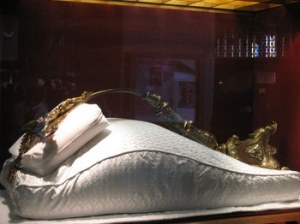 The tilma made of cactus ayate fibre is still in great condition and the image remains clear despite some accidents; one with nitric acid and the time someone tried to blow it up. In fact despite being on open display for many years under candle flame and incense, before even a glass covering was made, the tilma image is in much better condition that the Mona Lisa and is only 12 years younger than Leonardo’s famous painting. The great crucifix that was bent right over by the explosion is now on display. The glass covering of the tilma remained in tact.
The tilma made of cactus ayate fibre is still in great condition and the image remains clear despite some accidents; one with nitric acid and the time someone tried to blow it up. In fact despite being on open display for many years under candle flame and incense, before even a glass covering was made, the tilma image is in much better condition that the Mona Lisa and is only 12 years younger than Leonardo’s famous painting. The great crucifix that was bent right over by the explosion is now on display. The glass covering of the tilma remained in tact.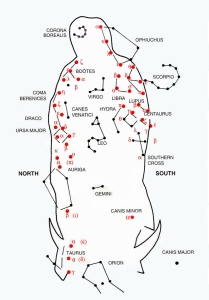 The Icon shows a woman dressed as royalty, but with her head bowed as one in service. The black ribbon that hangs under her prayerful hands shows that she is pregnant. More than that, thanks to some study of the stars on her mantel we see she is carrying the constellations from that very date. She wears the crown of stars (Corona borealis) and under her hands (invisibly) is Leo showing that she carries the Lion of Judah and above that over her heart is virgo saying she is a virgin.
The Icon shows a woman dressed as royalty, but with her head bowed as one in service. The black ribbon that hangs under her prayerful hands shows that she is pregnant. More than that, thanks to some study of the stars on her mantel we see she is carrying the constellations from that very date. She wears the crown of stars (Corona borealis) and under her hands (invisibly) is Leo showing that she carries the Lion of Judah and above that over her heart is virgo saying she is a virgin.


















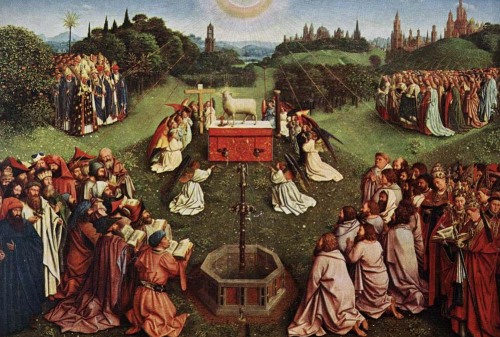 H/T to
H/T to 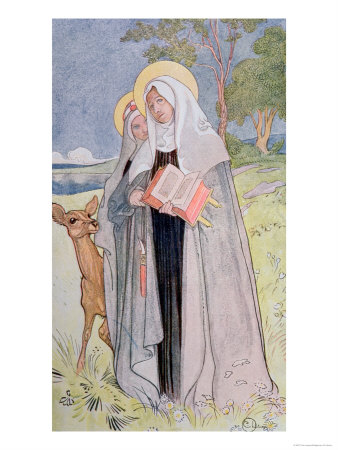 Today is the feast of my beloved St Bridget of Sweden. She is an amazing woman and a very powerful intersessor -she must have sore knees even in heaven!
Today is the feast of my beloved St Bridget of Sweden. She is an amazing woman and a very powerful intersessor -she must have sore knees even in heaven!